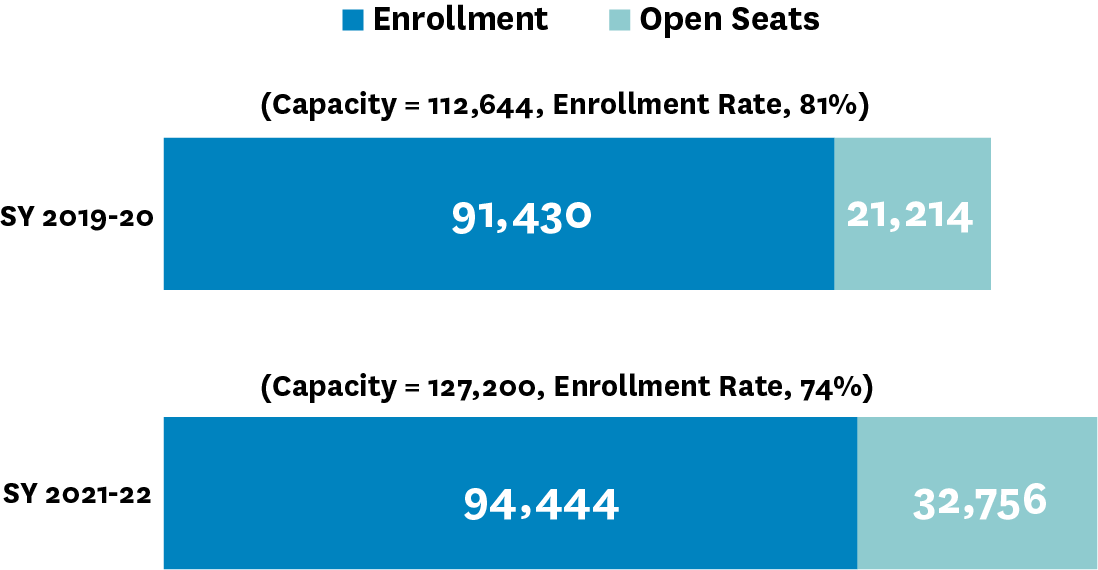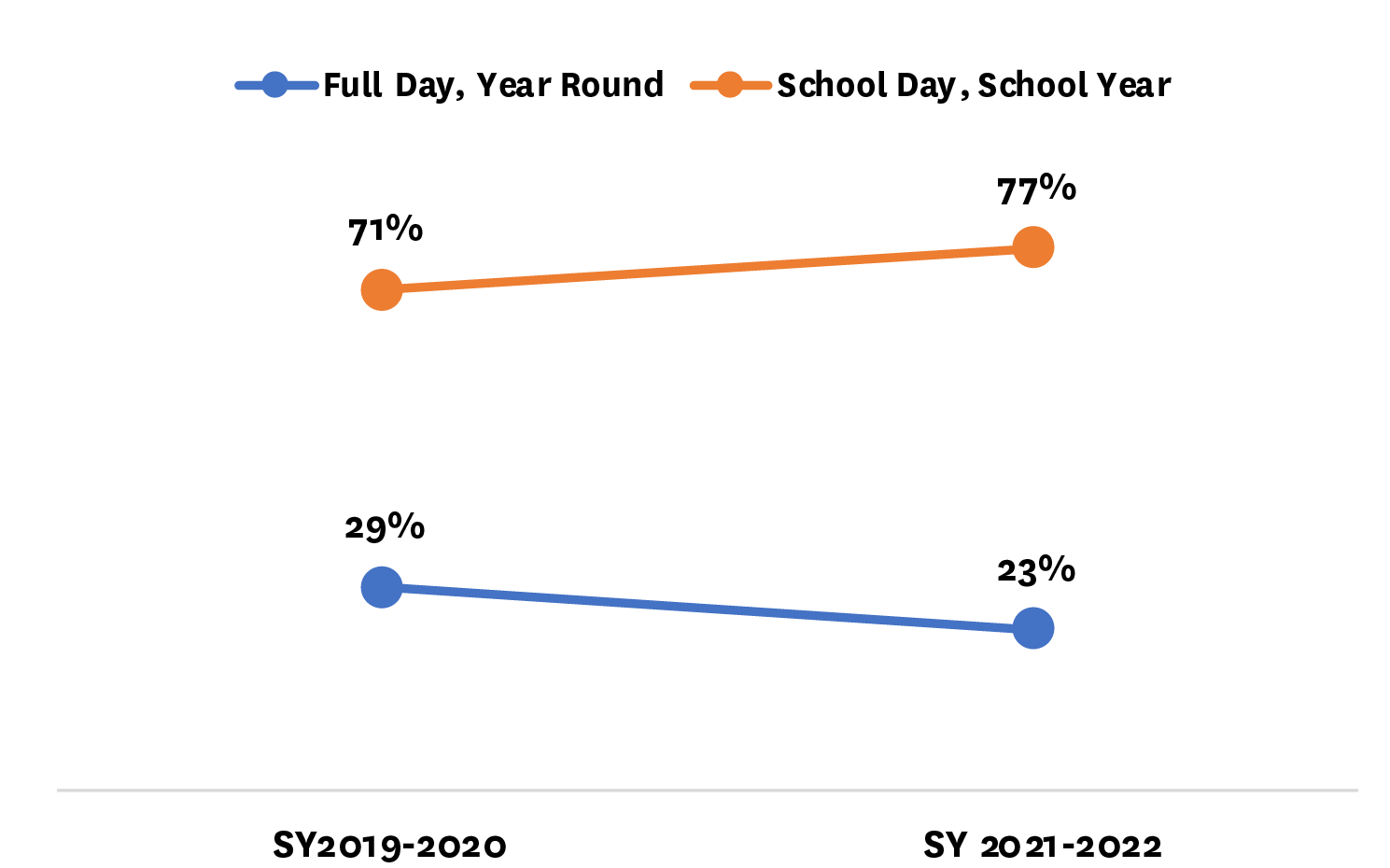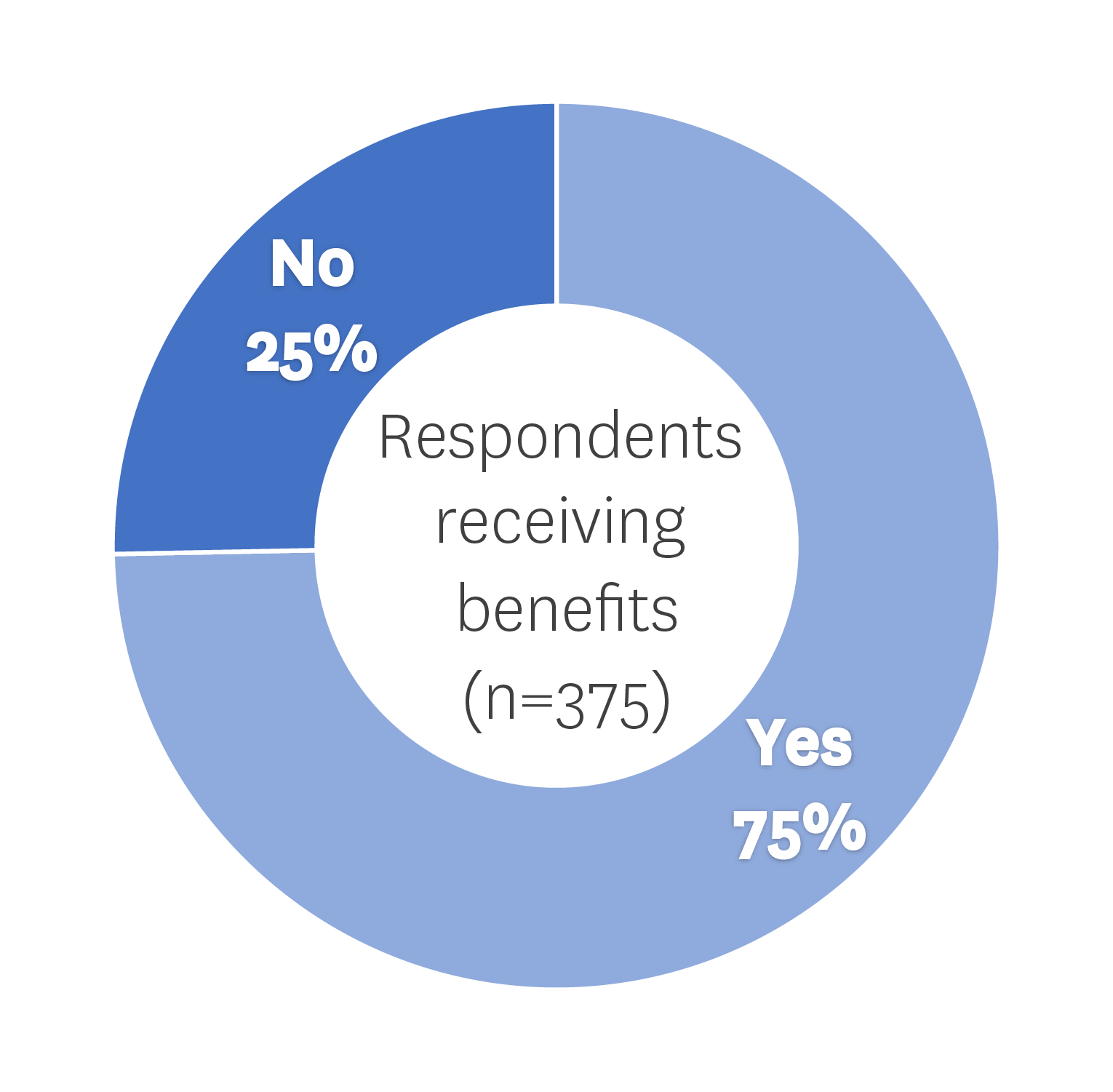

The Disconnect Between Families and NYC’s Publicly Funded Child Care
Insights
May 22, 2023
By: Julie Kronick
Did you know that there are over 500,000 children (that’s about half the population of Montana!) under 5 years old living in New York City? For parents raising young children, the benefits of dependable child care are apparent, and providers across the city offer these services at no cost to eligible families through NYC’s publicly funded child care system. But as you may have heard in recent conversations, the system is underutilized, accounting for many open seats illustrating a disconnect between families needing care across the city and these providers. Though there are real benefits and a clear need for child care, data shows only a 74% utilization rate of available seats in all contracted on-site programs (infant/toddler, 3-K, and Pre-K).
Capacity, Enrollment, and Open Seats in Contracted ECE Programs, SY2019-20 and SY2021-22

While this is an issue for the system, current plans to cut funding due to the open seats do not address the root causes of under-enrollment within a city with such a high need for child care services. As Council Members Riley and Krishnan importantly wrote in a recent City & State Op-ed on child care, “Early childhood education programs are vital to our city’s working families and essential to the success of New York City’s economy.” So what’s really going on?
The Youngest New Yorkers
Over the past year, CCC undertook a multipronged approach to understand the systemic challenges that result in open seats in NYC’s publicly funded child care system—also referred to as NYC’s early care and education (ECE) programs. The data we found became the foundation for our latest report, The Youngest New Yorkers, which shares back findings from administrative data, conversations with parents and providers, and a survey of caregivers/parents. This process lead CCC to several findings on why programs are currently underutilized by NYC parents, many of which align with what City Council Members put forth in their fiscal year 2024 Preliminary Budget Response.
Working Parents Need Workday, Year-Round Options
Working families need accessible child care to support their economic well-being. This is made even more evident by the reality that over 90% of NYC families could not afford center-based care for one infant or toddler, based on a federally recommended standard that child care costs do not exceed 7% of a household’s income. Through discussions with parents and providers, as well as data analyzed by our team, there is a clear need for child care offered during workday hours (8:00am to 6:00pm) and year-round, as opposed to school-day, school-year seats.
Budgeted Capacity in Contracted Care by Length of Care: School Day and Extended Day Programs, SY 2019-2020 vs SY 2021-2022

According to our parent/caregiver survey, 1 in 3 need full-day child care during the week, meaning between the hours of 8:00am and 6:00pm, at least. But right now, school-day, school–year seats have been prioritized in the system—which offers care for just over 6 hours per day (180 days per year) and excludes summer months and holidays. Ahead of the 2021-2022 school year, new contracts that center-based and family child care providers entered added capacity for school-day, school-year seats only and even reduced capacity for extended day, year-round seats. By the 2021-2022 school year, budgeted capacity for school-day, school-year programs comprised 77% of the contracted system. See data from our report below.
Share of Parents Reporting a Need for Child Care “Most of the day” by Age of Youngest Child, Compared to Enrollment in Contracted Extended Day Seats

The issue of compatible child care/working hours also accounts for open seats from the provider viewpoint. As stated by an ECE provider during our listening sessions, “Our school-day, school year seats are under enrolled, and our extended day, year-round seats are waitlisted.” The disconnect is illustrated from both perspectives: the system is not matching up with families’ needs.
Utilizing school-day, school year seats account for a loss of about 300 hours of child care per year for working families who need full-day support. And, since child care costs between $16,000 and $20,000 annually for one child, without knowledge of or access to care during work hours, families often have to make difficult decisions about work and child care needs. Our analysis of US Census Household Pulse Survey data in 2021 showed that women living with children are 2 ½ times more likely to cite child care as the reason for being out of work. NYC’s publicly funded system could alleviate this cost burden for families, connecting children with early education and allowing parents to return to work without additional stress if we prioritized programming during working hours.
The Op-ed mentioned previously, by Council Members Kevin C. Riley and Shekar Krishnan explains the City Council’s proposal to invest $15 million in a demonstration program to convert 1,000 school-day, school-year 3-K seats into full-day, full-year seats to meet parent/caregiver needs. They also express hope for the Department of Education (DOE) to explore opportunities to lift the income eligibility requirement for full-day, year-round seats. Read more from the Op-ed here.
Eligibility & The Application Process
On the topic of eligibility and awareness: there are still a significant number of families that currently do not know about their eligibility for subsidized care or where care is available, and struggle to apply. Our report shows that both parents and providers cite issues with application processes and enrollment as a barrier to program utilization—and a lack of funds prevents providers from conducting their own awareness campaigns to reach out to eligible community members.
Share of Respondents Aware of Subsidized Child Care Programs



Diving deeper, more than a third of parents who took our survey simply did not know about NYC’s subsidized child care programs (see above data), including those who reported that they receive some sort of benefit. Providers shared some frustrations about lack of awareness being a large component in under-enrollment, agreeing generally that lack of accessible information and outreach about programs available to families can affect where parents gravitate. This sentiment is echoed by parents, too, with one survey respondent writing, “The process of searching for schools is overwhelming. It’s hard to do research and learn more about each school. I even had trouble applying for 3k in My Schools [app] and had to eventually call the phone line to get an agent to help submit my application.” This segues directly into the application process, which both providers and parents/caregivers refer to as lengthy, at times confusing, and lacking a warm touch to help guide families with diverse needs and understanding.
While the application process for school-day Pre-K is a bit more straightforward, parents looking for extended-day care or parents with children under 3 have to go through a lengthy eligibility process involving proof of income and cumbersome paperwork. Because of the specific documentation needed for eligibility and the centralized application procedure, applications can easily be denied without explanation for parents who are potentially ESL or unaware of the strict requirements. Without guidance, this quickly becomes frustrating and potentially prohibitive. Many providers agree and suggest that this issue can be fixed by allowing families to apply in-person at program centers or with the help of local providers. As stated in our ECE report based on provider listening session feedback, “While contracted ECE providers are reimbursed for expenses based on enrollment, they have neither control over the enrollment process, nor a publicly funded budget for materials and human resources needed for outreach to NYC communities in ways that ensure families are aware of service options.”
Going back to our alignment with City Council recommendations, revisiting enrollment and application process is a shared priority. As stated in the Op-ed, “A key component of our recommendation calls for the development of a two-pronged enrollment system that also offers the option of enrolling directly on-site through community-based organizations, in addition to centrally through DOE.” In our survey, parents reported a desire for better communication with providers and more information, including information on the process for enrolling in an ECE program and subsidized care. Allowing ECE providers to act as a source of information for parents, through funds for community outreach as well as ability to guide them through the application can work to build trust and public awareness and alleviate frustrations in the process, leading to stronger utilization.
What’s Next?
CCC has outlined these and other policy recommendations based on our data findings. You can see them all in our report here. We have also turned these recommendations into actionable items for our city leaders which you can easily advocate for with us. Take just three minutes to sign on to our take action in support of early care and education in NYC, sending a message to our leaders to prioritize expanding options for child care and restoring budget cuts to 3-K.
Take a moment to read through our other Insight Post about the process of participatory research utilized for this report here. You can also read the Op-ed mentioned several times in this post to understand City Council recommendations as well as this Chalkbeat article on the Council’s press conference on ECE, which our own Policy and Advocacy Associate Rebecca Charles attended.
Marija Drobnjak conducted the analysis of administrative data, supported outreach to ECE providers and co-authored The Youngest New Yorkers report. Cristina Onea coordinated outreach to ECE providers, led the coordination and facilitation of parent listening sessions, analyzed parent survey data, and co-authored this report. Bijan Kimiagar led the co-design and implementation of the research approach and methods, analyzed parent survey data, and co-authored and designed this report. Marija Drobnjak contributed feedback to an earlier version of this post.


